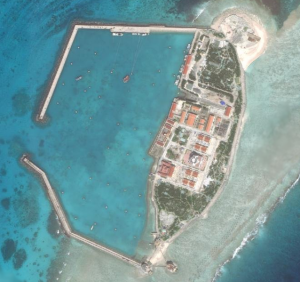
In the shadowy world of Cold War espionage, few programs were as extensive — or as controversial — as Operation Gladio, NATO’s clandestine network of “stay-behind” forces designed to wage guerrilla warfare in the event of a Soviet invasion of Western Europe. What began as a reasonable defensive precaution evolved into a decades-long covert operation that would eventually raise profound questions about democratic oversight, government accountability, and the thin line between national security and state-sponsored terrorism.
Origins in Wartime Necessity
The concept of stay-behind forces emerged from the bitter lessons of World War II, when resistance movements across Nazi-occupied Europe demonstrated both the potential and the limitations of guerrilla warfare against occupying forces. As the Iron Curtain descended across Europe in the late 1940s, Western intelligence services faced a stark reality: the Red Army’s overwhelming conventional superiority meant that any Soviet invasion would likely overrun Western Europe’s conventional defenses within days.

The solution, conceived jointly by the CIA and Britain’s MI6, was elegantly simple in theory: pre-position trained personnel, weapons caches, and communication equipment throughout Western Europe to serve as the nucleus of resistance movements should the worst occur. These stay-behind units would conduct sabotage operations, gather intelligence, and coordinate with NATO forces attempting to liberate occupied territory.
The formal structure began with the Western Union’s Clandestine Committee (WUCC) in 1948, which was subsequently integrated into NATO as the Clandestine Planning Committee (CPC) in 1951. By 1958, NATO had established the Allied Clandestine Committee (ACC) to coordinate secret warfare operations across member nations.
Named after the double-edged gladius sword of Roman legionaries, Operation Gladio was officially established in 1956, though its roots stretched back to the immediate postwar period. The program’s existence was kept secret not only from the Soviet Union but from most Western European populations and even many of their elected officials.
The Network Expands
What made Gladio unique was its scope and sophistication. Unlike ad hoc resistance movements that formed spontaneously during wartime, these were professionally organized networks with carefully selected personnel, standardized equipment, and regular training exercises. Each participating NATO country maintained its own stay-behind organization: Gladio in Italy, Absalon in Denmark, P26 in Switzerland, ROC in Norway, I&O in the Netherlands, SDRA8 in Belgium, and similar networks in Germany, France, Austria, Greece, and Turkey.
The typical Gladio cell consisted of 10-15 individuals, often recruited from military special forces, intelligence services, or civilian volunteers with particular skills—radio operators, demolitions experts, former resistance fighters. These operatives underwent intensive training in sabotage techniques, covert communications, and survival skills, often at secret facilities in NATO countries or neutral territories.

Weapons caches were carefully concealed throughout the countryside—buried in forests, hidden in caves, stored in seemingly abandoned buildings, and secured in underground bunkers scattered across mountain locations. The arsenal was impressive and comprehensive: automatic weapons, explosives, pistols, ammunition, knives, navigation equipment, spy radios, guerrilla warfare manuals, specialized assassination weapons, and emergency supplies including brandy and chocolate. Cache discoveries as late as 1996 revealed the true scope of the program. In Italy alone, investigators discovered 622 hidden weapons dumps containing everything from machine guns to anti-tank rockets, demonstrating the massive scale of NATO’s secret preparations.

According to former CIA Director William Colby, who oversaw Scandinavian operations, these networks required careful coordination with NATO planning, radio communications linked to potential government-in-exile locations, and specialized equipment secured from the CIA. The operation extended beyond traditional NATO boundaries, with CIA support for anti-communist movements in Ukraine and covert operations in the Baltic countries.
The Strategy Behind the Shadows
From a strategic perspective, Gladio represented a form of deterrence through promised resistance. Soviet military planners would have to factor in not just the immediate costs of conquering Western Europe, but the ongoing expense of occupying territories where trained guerrillas could strike at supply lines, assassination key collaborators, and gather intelligence for NATO counterattacks.
This strategy drew heavily from successful resistance operations during World War II, particularly the French Resistance and Yugoslav partisans, while attempting to avoid their primary weaknesses: poor coordination with Allied forces, inadequate equipment, and security vulnerabilities that led to mass arrests.
The program also served intelligence-gathering functions during peacetime. Stay-behind operatives were positioned to monitor communist activities, track potential collaborators, and maintain surveillance on strategic targets. This dual-purpose nature would later prove controversial when allegations emerged that some units engaged in domestic political surveillance beyond their official mandate.
The Italian Revelation and Gladio Exposed
The existence of these networks remained one of the Cold War’s most closely guarded secrets until 1990, when Italian Prime Minister Giulio Andreotti revealed the existence of Gladio to the Italian Senate. His disclosure was prompted by the discovery of a 1959 document from Italy’s military intelligence service SIFAR, titled “The special forces of SIFAR and Operation Gladio,” which detailed the secret army’s NATO connections and CIA training.
Andreotti’s revelation described Gladio as “the Italian branch of an international network of secret stay-behind armies that existed in all countries of Western Europe.” The Italian press called it “the best kept, and most damaging, political-military secret since World War II”.
The Strategy of Tension Controversy
The most controversial aspect of Operation Gladio involves allegations that stay-behind networks became entangled with domestic terrorism during Italy’s “Years of Lead” (1968-1982). This period saw over 14,000 politically motivated attacks, including bombings, assassinations, and kidnappings by both far-left groups like the Red Brigades and far-right organizations such as Ordine Nuovo.
Critics, particularly Swiss academic Daniele Ganser, argue that Gladio networks participated in a “strategy of tension” designed to prevent communist parties from gaining power by conducting false flag operations that could be blamed on left-wing groups. Key incidents cited include the 1969 Piazza Fontana bombing in Milan, which killed 17 people, and the 1980 Bologna railway station bombing that killed 85.

The strategy of tension theory suggests that right-wing terrorism was designed to create public fear and drive voters toward authoritarian solutions. As Italian Prime Minister Francesco Cossiga observed about the Bologna bombing: “Unlike leftist terrorism, which strikes at the heart of the state through its representatives, right-wing terrorism prefers acts such as massacres because acts of extreme violence promote panic and impulsive reactions”.
International Response and Investigations
Following Gladio’s exposure, the European Parliament passed a resolution on November 22, 1990, condemning “the clandestine creation of manipulative and operational networks” and calling for full investigation into these secret organizations. The resolution specifically protested “the assumption by certain US military personnel at SHAPE and in NATO of the right to encourage the establishment in Europe of a clandestine intelligence and operation network”.
However, only Italy, Belgium, and Switzerland conducted parliamentary investigations into their respective networks. The George H.W. Bush administration refused to comment on the revelations, maintaining official silence about U.S. involvement.
Global Implications
While Gladio focused on Europe, the United States simultaneously developed similar programs worldwide. In Asia, the CIA created stay-behind networks in countries like South Korea, Taiwan, and the Philippines. In Latin America, comparable programs supported anti-communist forces throughout the region.
These operations reflected a fundamental Cold War reality: the nuclear stalemate meant that much of the actual conflict would be fought through proxies, covert operations, and what would later be termed “hybrid warfare.” Stay-behind networks represented the defensive complement to more aggressive covert operations like the Bay of Pigs invasion or support for Afghan mujahideen.

The philosophical underpinning was straightforward: democratic governments had not just the right but the obligation to prepare for scenarios where normal constitutional processes might be suspended by foreign occupation. The question that would later haunt these programs was whether such extraordinary measures could be contained within democratic norms during peacetime, or whether they inevitably created parallel power structures accountable to no one.
The legacy of Operation Gladio continues to influence contemporary debates about government surveillance, covert operations, and the balance between security and transparency in democratic societies.
The Historical Debate
The true nature and extent of Gladio’s activities remain subjects of intense historical debate. The U.S. State Department has acknowledged the existence of NATO stay-behind efforts and Italy’s Gladio specifically, confirming their purpose as resistance preparation against potential Soviet aggression. However, American officials firmly deny any U.S. involvement in terrorism, characterizing allegations of false flag operations as Cold War-era Soviet disinformation.
Critics of the conspiracy theories point to the reliance on questionable documents, particularly the alleged U.S. Army Field Manual 30-31B, which the State Department claims is a Soviet forgery designed to discredit American intelligence operations.
Legacy and Contemporary Relevance
Operation Gladio’s legacy extends far beyond its Cold War origins. The revelations fundamentally altered public understanding of post-war European history, demonstrating how deeply intelligence operations could penetrate democratic societies. The networks were never called upon to resist Soviet invasion, as the threat they were designed to counter ultimately never materialized.
The operation raises enduring questions about the balance between national security and democratic oversight, the accountability of intelligence agencies, and the potential for covert operations to exceed their original mandates. Whether Gladio remained purely a defensive contingency or evolved into something more sinister continues to divide historians and fuel conspiracy theories decades after its exposure.
What remains undisputed is that NATO and Western intelligence agencies maintained extensive secret networks throughout the Cold War, equipped with weapons and trained in unconventional warfare, operating largely outside democratic oversight. The full truth about their activities may never be completely known, ensuring that Operation Gladio remains one of the Cold War’s most intriguing and controversial legacies.
…The real question is: Are these networks still out there, on their own?








